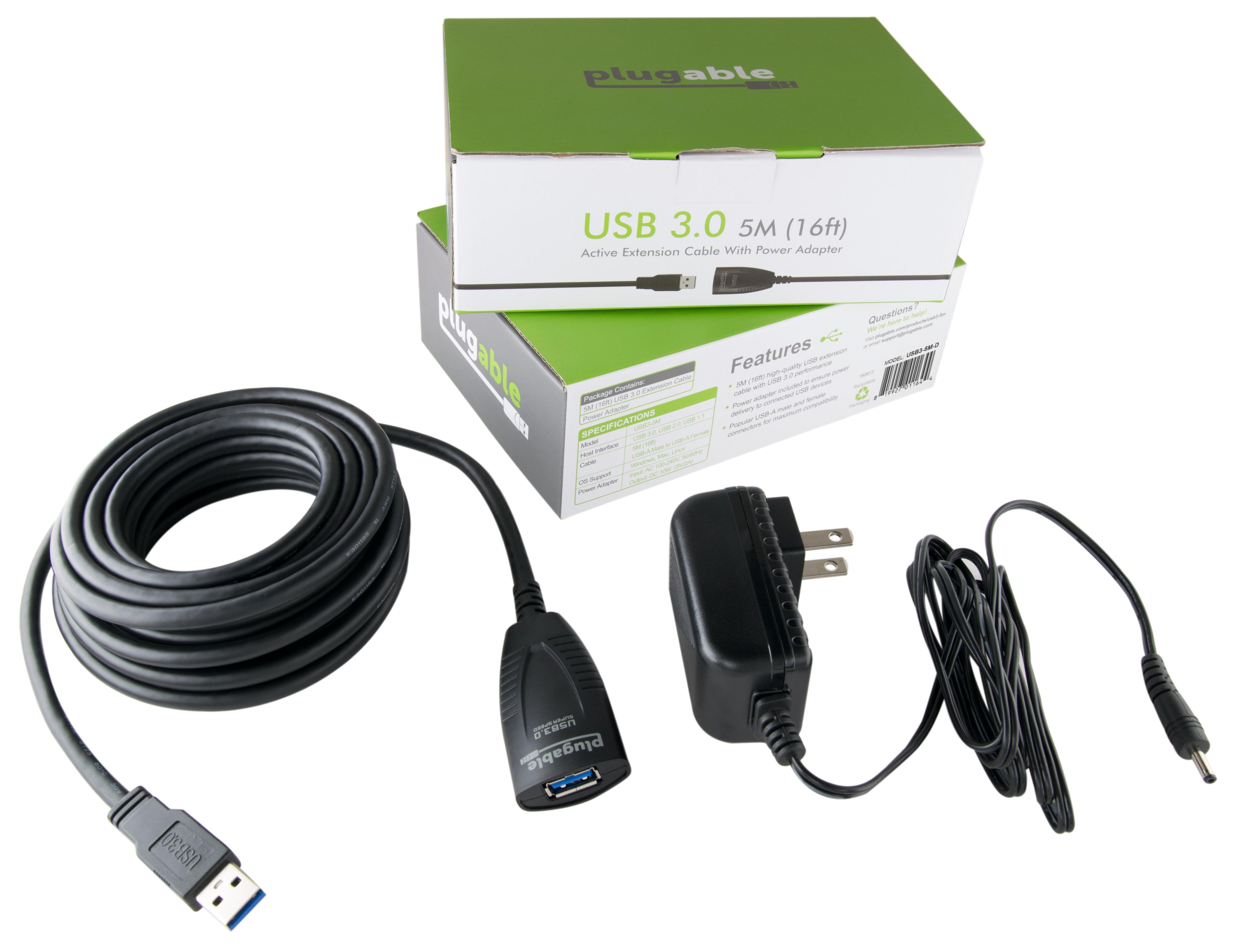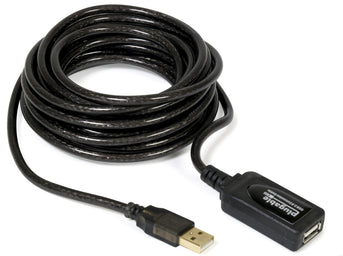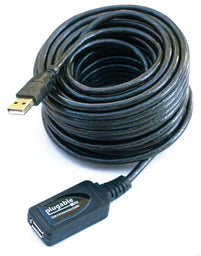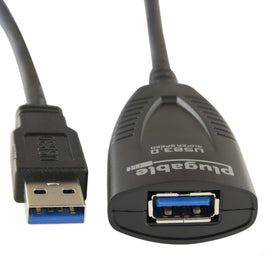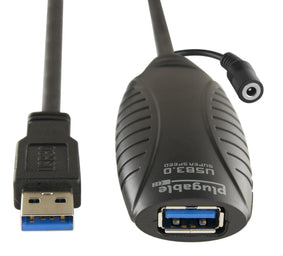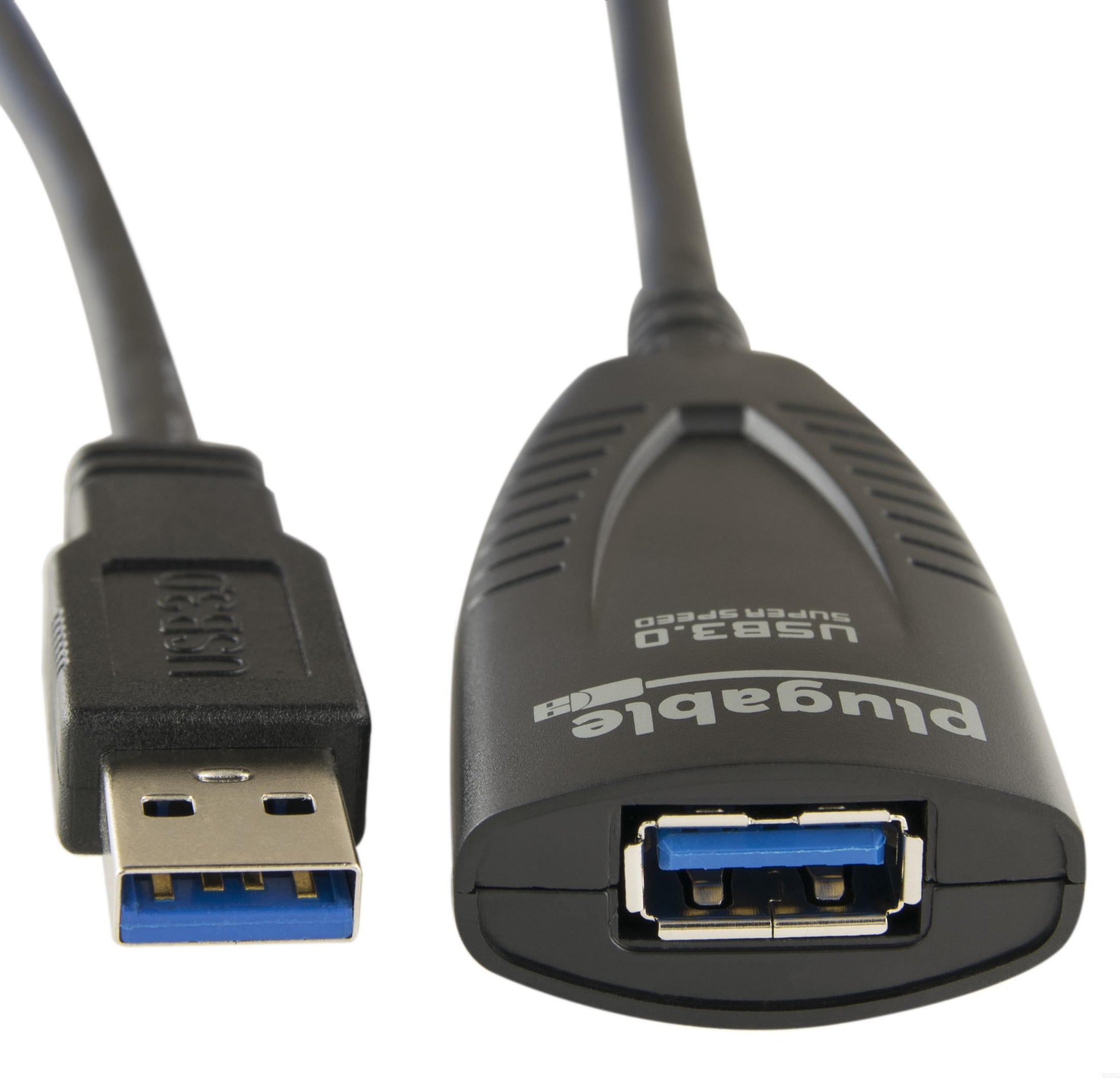
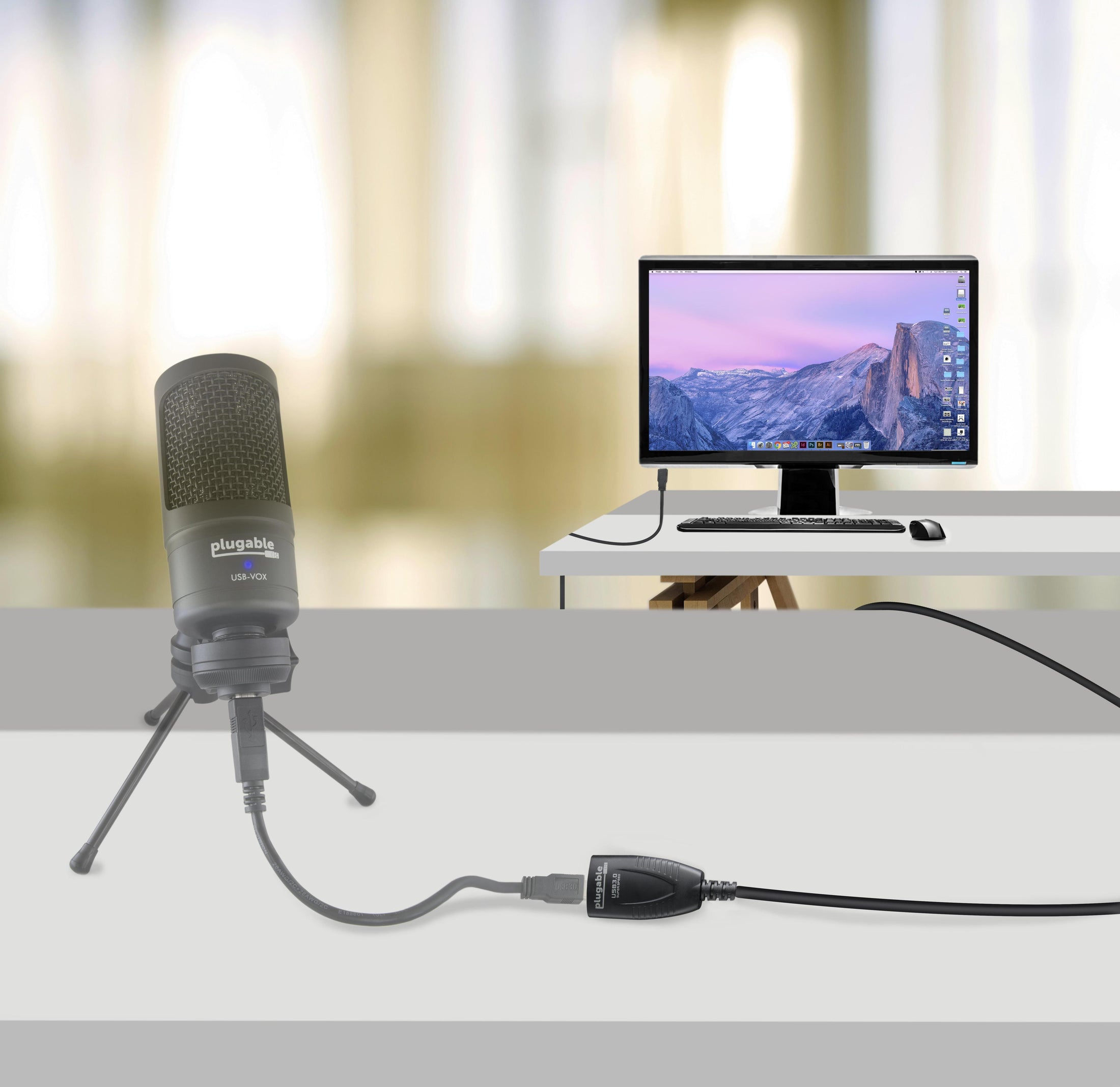
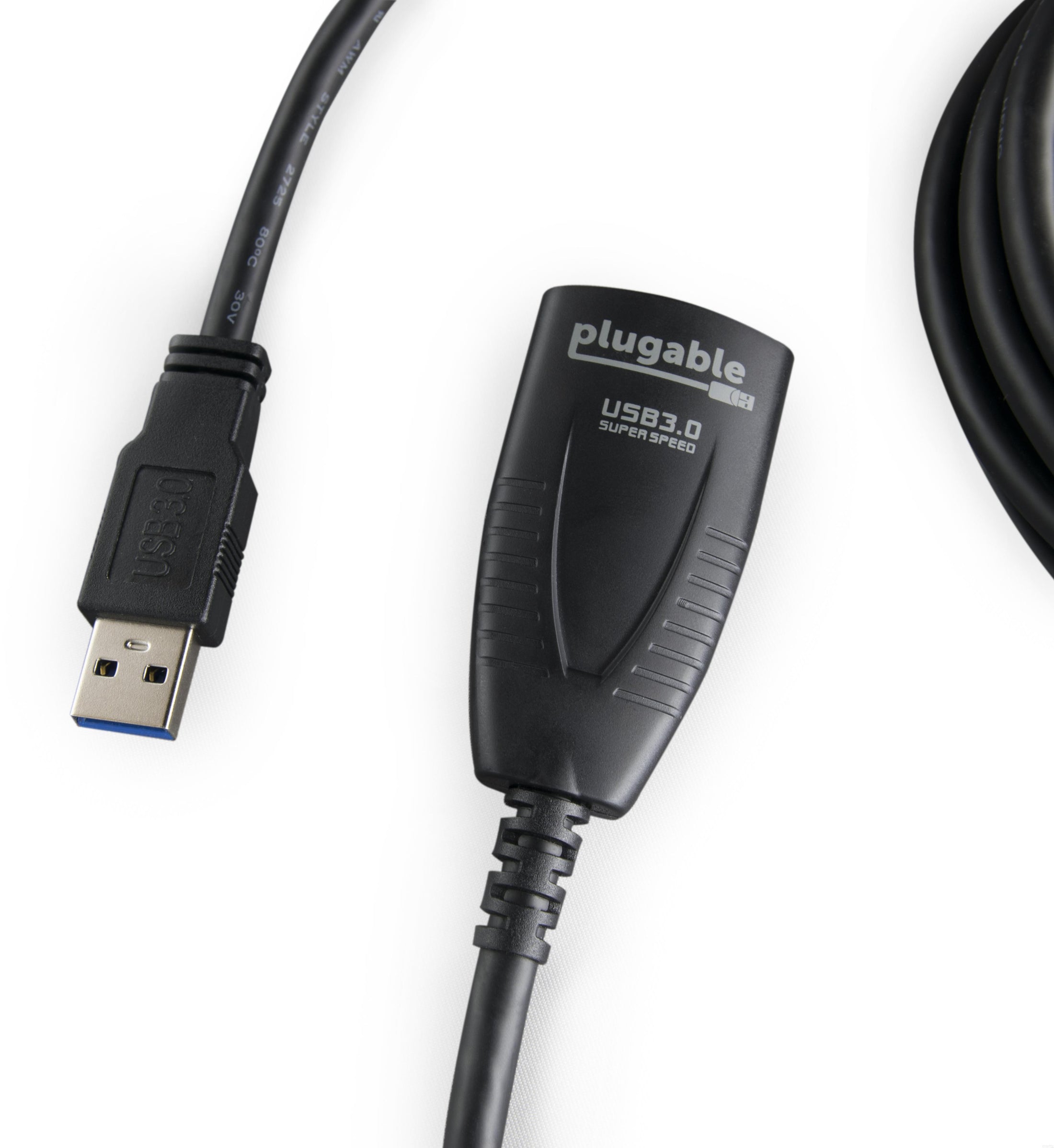
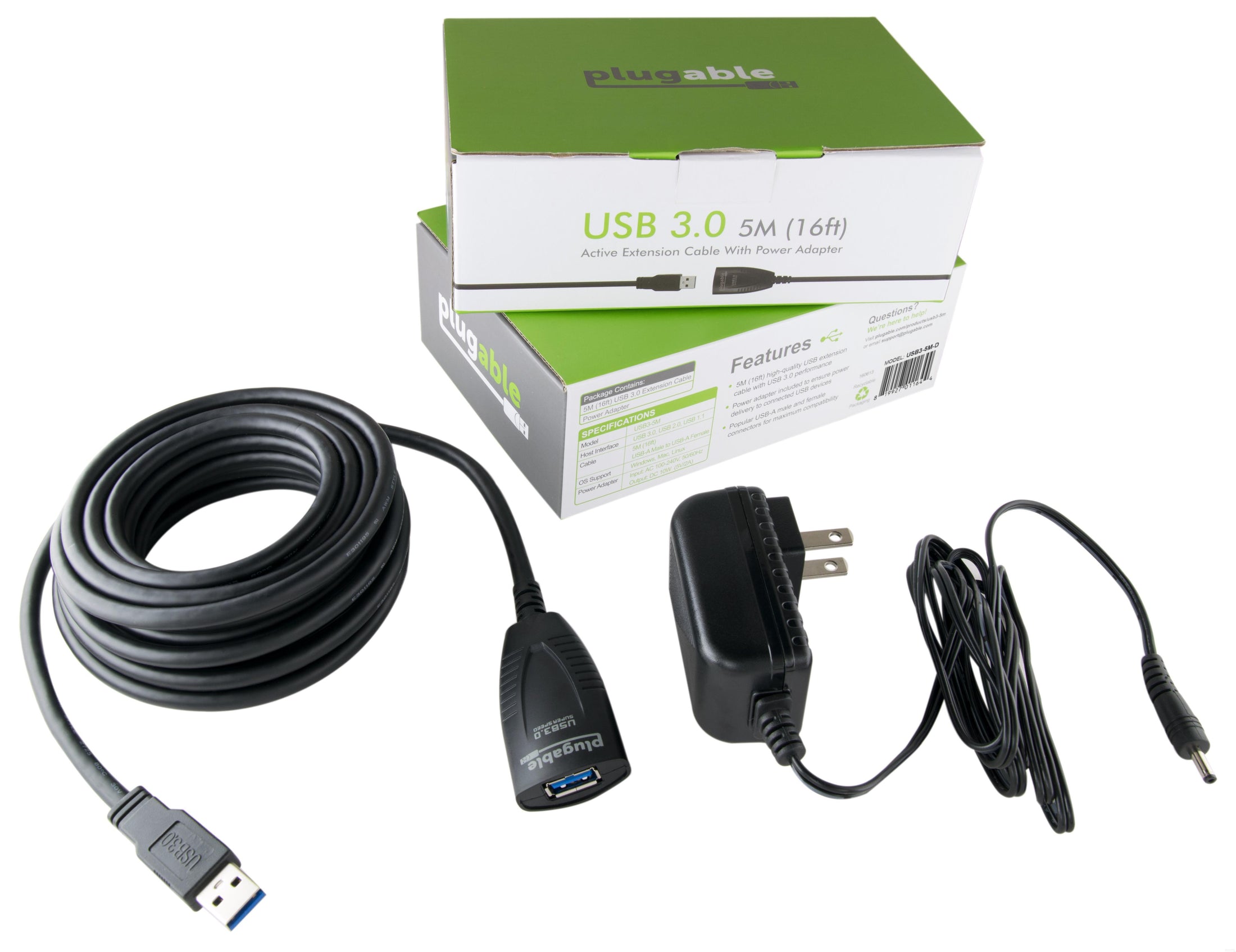
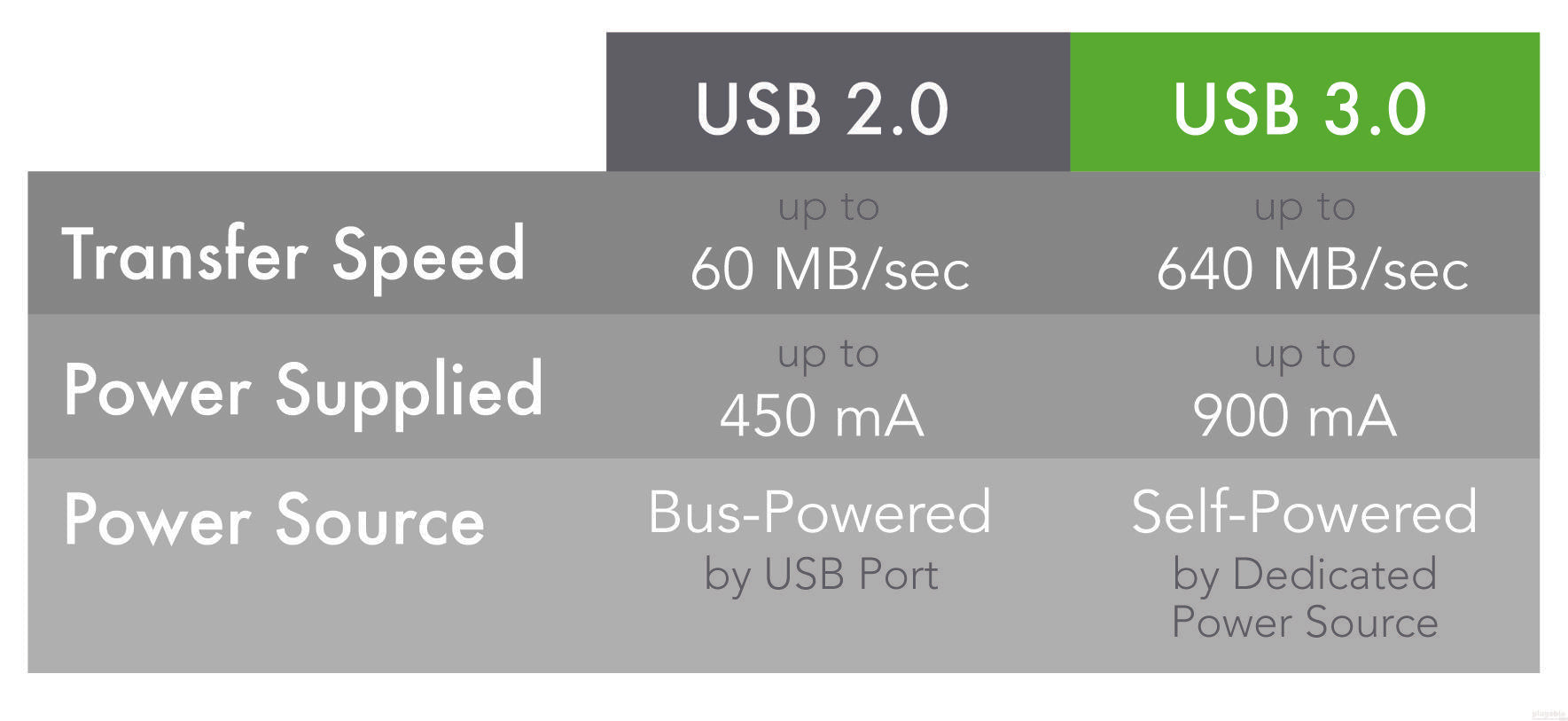

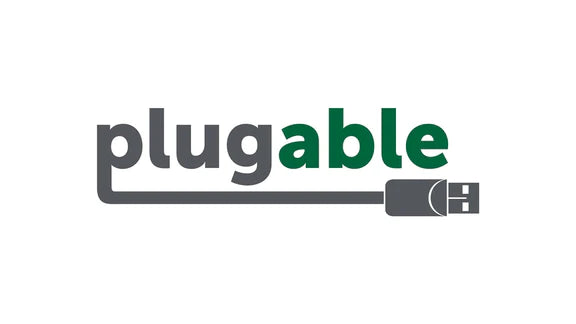






Hassle free, 2-Year Warranty
Fast, Free Shipping on Orders $35+
Lifetime Technical Support
30-Day Money Back Guarantee
Plugable USB 3.0 5M (16ft) Extension Cable with Power Adapter and Back-Voltage Protection
$29.95 USD
SKU: USB3-5M-DAmazon Rating : (121 Reviews)
Features
- 5 Meter (16 ft) USB 3.0 Extensions— Extend your computing power with our 5 Meter (16 ft) USB 3.0 Active Extension Cable
- Included 5V AC Power Supply— Ensures that your connected USB devices receive the power they need with full back-voltage protection
- Fast USB 3.0 Transfer Speeds— USB 3.0 transfer speeds (up to 5Gbps) with standard USB Type A male to Type A female connectors and power (up to 900mA)
- Wide Compatibility— With Windows, Mac, Linux, PlayStation, Xbox. Connect remote USB printers, scanners, keyboard and mouse, etc. and more
- 2-Year Coverage, Lifetime Support— Every Plugable product, including this USB cable, is covered against defects for 2 years and comes with lifetime support. If you ever have questions, contact our North American-based team - even before purchase
Free 3-Day Continental U.S. Shipping on Orders Over $35!


